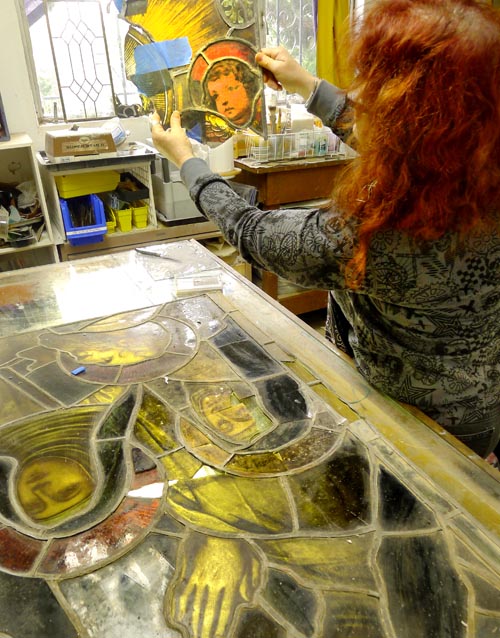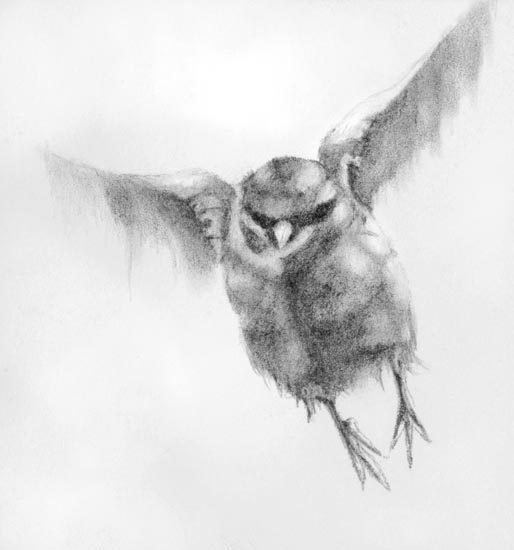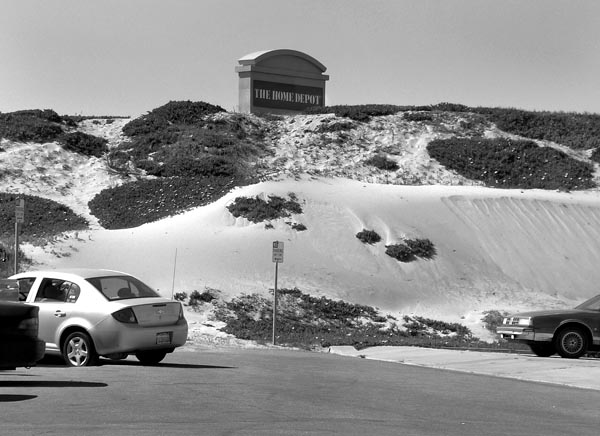Interviewsand Articles
Editor's Introduction w & c #24: The Action of Light
by Richard Whittaker, Jan 29, 2017

Drawing by Rebecca Clark
Almost thirty years ago I was working as an art director for a poster company in San Francisco. Whenever I ran into designers, illustrators or photographers, I’d ask them to tell me about their personal work. Often what they said didn’t sound very interesting. But, fortunately, sometimes I’d ask to see the work anyway. Sometimes what had sounded lackluster turned out to be a revelation. This only had to happen a few times to bring home the bumper-sticker wisdom: Don’t believe everything you think. How many treasures are missed from this common tendency?
The way our interview with Joan di Stefano came about is an example of getting past a snap judgment. And what followed, the shift in my own attitude, was so dramatic I was left with an indelible impression. Instead of dismissing this stranger out of hand, I heard myself saying, “Okay. Why don’t you sit down here and tell me why I should do a story on you.”
Part of her story gave us our theme, the action of light. When I began thinking about it, I quickly realized this phrase opens into magnitudes beyond whatever we can say here. Everywhere light is synonymous with the sacred, for instance. It’s what makes the world visible and is a source of all life. When I began thinking about it, I quickly realized this phrase opens into magnitudes beyond whatever we can say here. Everywhere light is synonymous with the sacred, for instance. 
It’s what makes the world visible and is a source of all life.
I’ve read that our eyes are so sensitive to photons that just one, or a few, can trigger a perception. So our sensitivity to light extends to the level of elementary particles, a spectacular thing to ponder. Light is mysterious. And there’s inner light, too. I’m reminded of what James Turrell said in issue #2, that his grandmother told him “to go inside to greet the light.” There are many ways to think about it. And each feature in this issue resonates with our theme in its own way.
Imagine my delight in discovering Rebecca Clark’s drawing that graces our cover. It was almost as if the universe sent us a perfect depiction of our theme. Contributing editor Jane Rosen writes of Clark’s work that her seeing allows us to see—in a sustained way—what is often just a glimpse otherwise.
Our interview with Tree [the name he goes by] reflects another quality of light. One day a friend was telling me about Tree and enthused, “He’s one of my favorite love warriors.” My thought was “Oh, a possible future interview.” Two years later, here it is—and it leads me to another question: is there a light that comes from the heart? I think so.
Photography is sometimes called an art of light. Of course, photographs are made by the capture of reflected light. That alone hardly justifies such a high-sounding phrase and yet some photos live up to this billing, bringing something magical through the grace of light. Trish Carney speaks of her photos more modestly as “lyrical.”  One feels this immediately, and her work also touches on the revelatory—another form of “light.”
One feels this immediately, and her work also touches on the revelatory—another form of “light.”
And I share some thoughts about an exhibit I saw in Sand City, California called Transcendental Vision. In part, it aimed to reflect Japanese culture’s effect on contemporary art. Sand City? There really is such a place and several of its streets dead-end in real sand dunes. At the time I heard about this show, I happened to meet a Buddhist priest and scholar teaching at the Graduate Theological Union in Berkeley. Dr. Nakasone, it turned out, is also a master of Japanese calligraphy. We had an interesting conversation about Pure Land Buddhism and other things. Sand City. Transcendental Vision. It felt as if synchronicity was at work somehow, and is that another kind of light?
At the time I heard about this show, I happened to meet a Buddhist priest and scholar teaching at the Graduate Theological Union in Berkeley. Dr. Nakasone, it turned out, is also a master of Japanese calligraphy. We had an interesting conversation about Pure Land Buddhism and other things. Sand City. Transcendental Vision. It felt as if synchronicity was at work somehow, and is that another kind of light?
We also bring you a small portfolio of Edith Hillinger’s remarkable work. I was touched by her written description of what underlies her work. It’s a jewel in itself and hints at some of the light that seems to emanate from Edith herself, as all of us who know her can attest.
For our Art/Environment feature, Sam Bower shares an update from greenmuseum.org, which has embarked on the radical experiment of giving up all fundraising and operating on an entirely volunteer basis. Who else does that? (Only servicespace.org, and this magazine, as far as we know.) Recently, Suzanne Tan of the Berkeley Art Center invited several core members of greenmuseum.org to help lead an evening of discussion with fifteen California museum directors. Sam proposed two questions for discussion, each central to greenmuseum.org. “How can we embody a notion of art as service to communities and ecosystems?” And “What is being overlooked today by museums?”
We continue our serialization of Guide, Enrique Martínez Celaya’s compelling meditation on art and value. This is part nine, with one more to go.
And we’re happy that Rue Harrison’s Indigo Animal, which arrived at a point of denouement after so many years, is now off on a new adventure involving a Lawn Statuary Research Institute summer session in Rome. —rw
About the Author
Richard Whittaker is the founding editor of works & conversations and West Coast editor of Parabola magazine.
SUBSCRIBE NOW
TO OUR MONTHLY NEWSLETTER









Share Your Comments and Reflections on this Conversation: